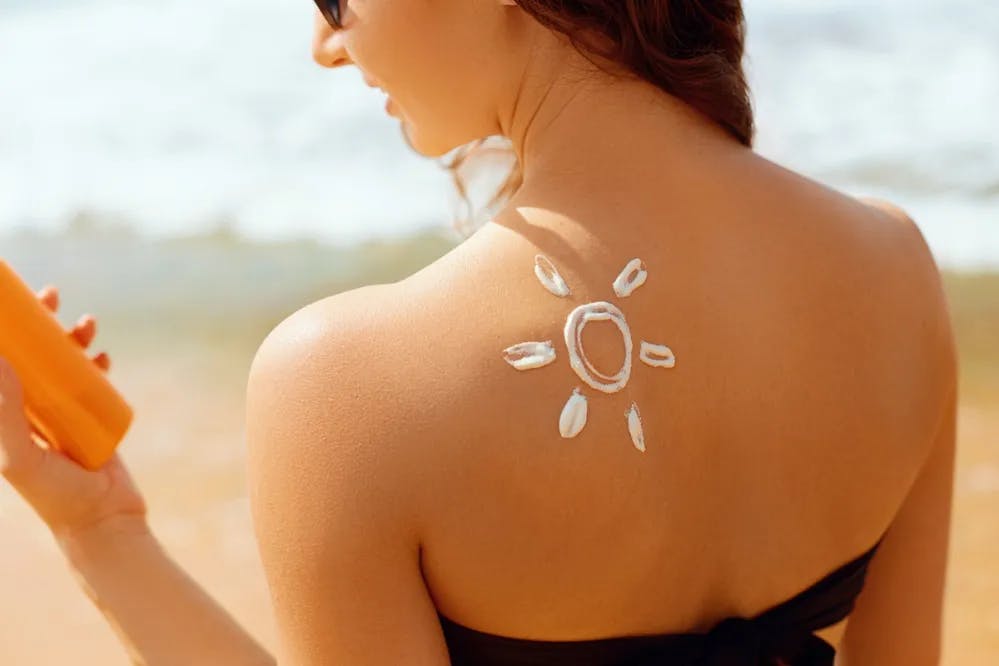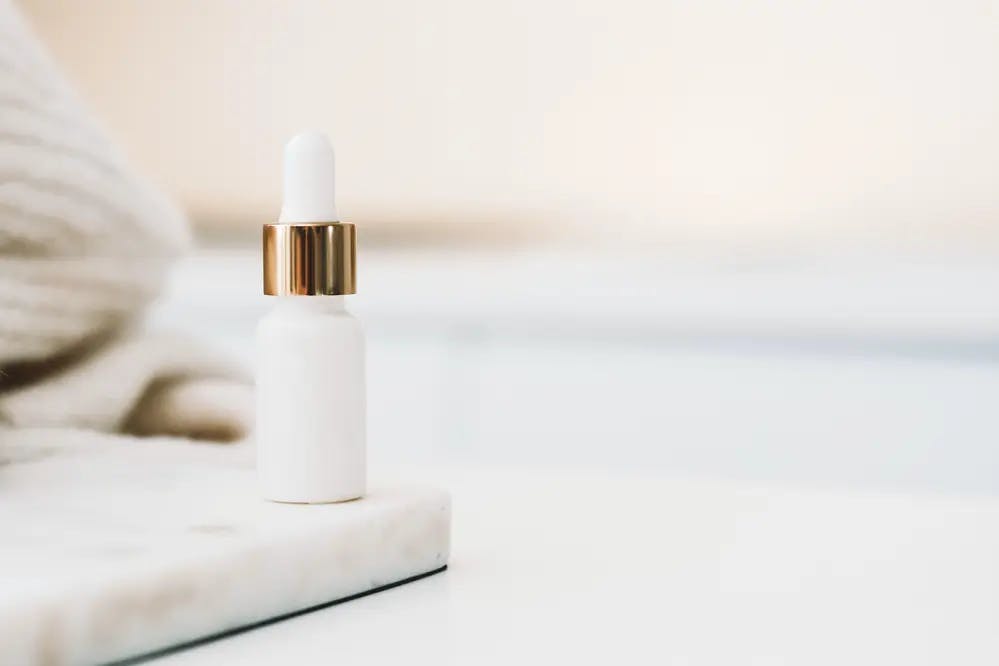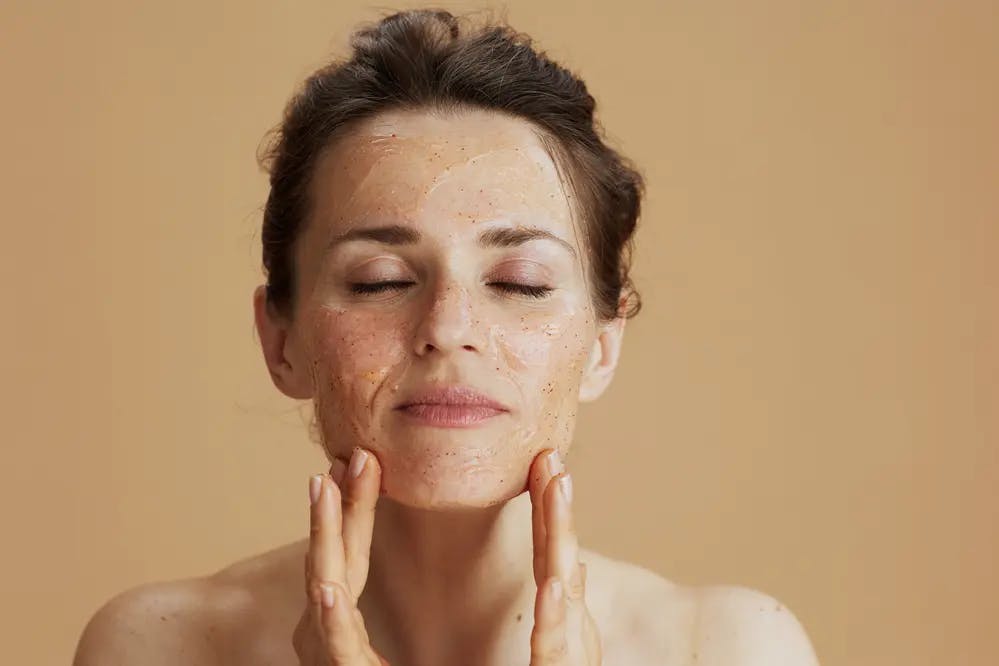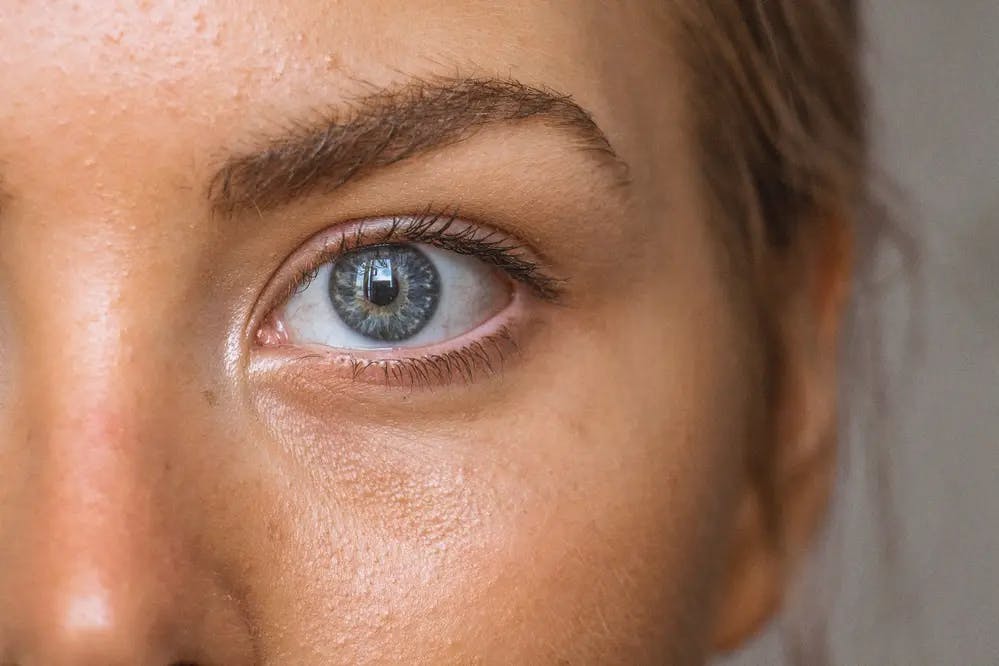Adding Vitamin B5 To Your Skincare Routine: A Good Idea?
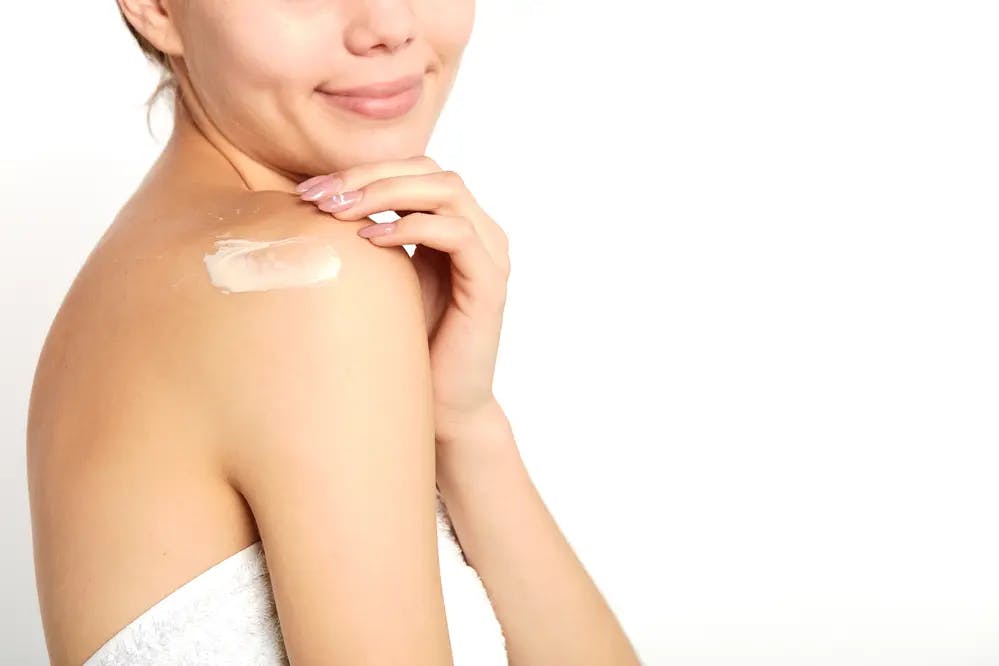
Table of Contents:
- What Are Vitamin B5, Vitamin B, and Pantothenic Acid?
- What are the Main Skin Benefits of Vitamin B5?
- Are There Any Risks Associated With Vitamin B5?
- Which Skin Types Are Best Suited to Vitamin B5?
- Should Any Skin Types Avoid Vitamin B5?
- Where Can You Find Vitamin B5 Naturally?
- How to Use Vitamin B5 Sit in Your Skincare Routine
- Conclusion
Vitamin B5 is frequently found in moisturizer products and serums because of its many beneficial properties.1 For one, Vitamin B5 can stabilize the skin’s barrier and help it retain more water, keeping it elastic and soft and reducing fine lines. This compound has also been found helpful for cystic acne, eczema, and rosacea.2
In this article, we will cover everything you need to know about Vitamin B5 and how you can incorporate it into your skincare routine.
What Are Vitamin B5, Vitamin B, and Pantothenic Acid?
Vitamin B is a class of (mostly water soluble) chemical compounds essential to body metabolism; especially in terms of red cell formation. The class includes vitamins B1 to B12, with each member having different physical and chemical properties and offering slightly varied benefits to body functioning.
Vitamin B5, also known as pantothenic acid, is vital for the synthesis of Coenzyme A, which is required to metabolize fatty materials present in our bloodstream.
What are the Main Skin Benefits of Vitamin B5?
Pantothenic acid is popular in skincare science because it offers several dermatological benefits. Firstly, pantothenic acid is highly hygroscopic. This means it has an inherent ability to attract, bind and hold water molecules.
When you apply pantothenic acid topically on the skin surface, you increase the epidermal moisture content. This can help maintain skin hydration and ensure it remains in healthy condition, as there’s an abundant supply of water molecules to the outer skin layer.
The main benefits of Vitamin B5 or pantothenic acid3-6 include:
- Hydrating: Keeping your skin moisturized and hydrated.
- Soothing: Pantothenic acid soothes tissues and can help keep normal biological functioning in order.
- Barrier repairing: Vitamin B5 supports the barrier function of the skin and reduces trans-epidermal water loss (TEWL).
- Anti-inflammatory: It’s been suggested that pantothenic acid can reduce low-grade inflammation.
- Antioxidant: Pantothenic acid, Vitamin B5, or d-panthenol boosts the production of glutathione (which binds free radicals and peroxides), reducing the formation of melanin and reducing the appearance of dark spots.
- Wound healing: Some studies have also shown Vitamin B5 might speed wound healing, especially after having surgery.
- Anti-aging: Vitamin B5 can help in the production of fibroblasts in the middle layers of your skin and boost the production of glycan, collagen, and elastin - making your skin look more youthful.
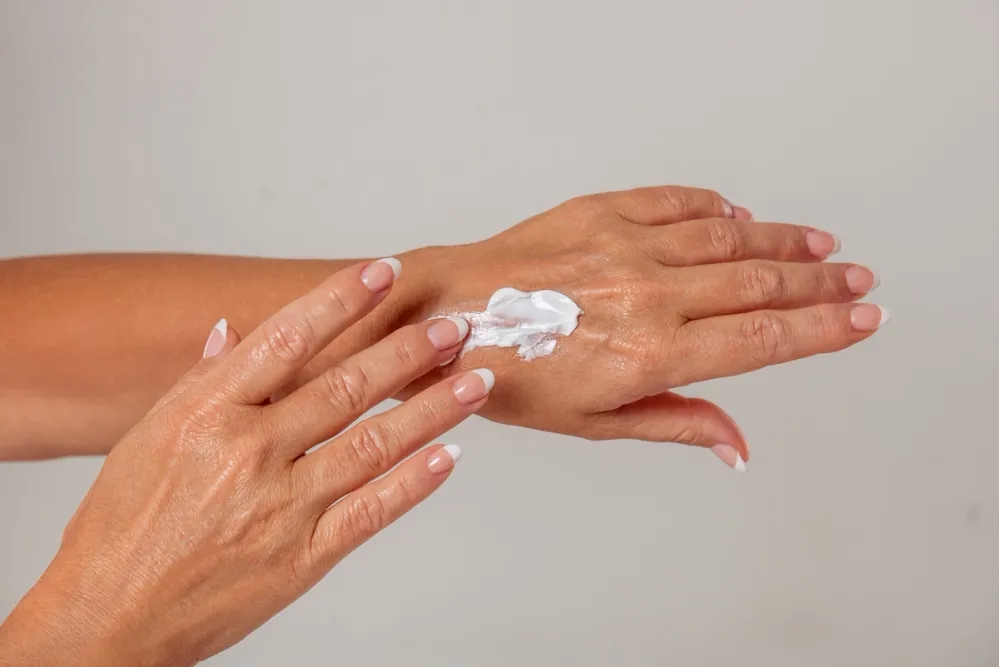
Are There Any Risks Associated With Vitamin B5?
Doctors consider Vitamin B5 safe, especially when used topically.7 You can use it even on infant skin (this is why it is a common ingredient in products that treat diaper rash). Because it’s pretty innocuous, you can use it in conjunction with other products, too. Just check the ingredients thoroughly if you know you’re prone to allergic reactions.
If you take Vitamin B5 as a dietary supplement, you should make sure you do not exceed the daily adequate intake and always take tablets or capsules with water - preferably after you finish eating.
Which Skin Types Are Best Suited to Vitamin B5?
Vitamin B5 or pantothenic acid is beneficial for all skin types. Because it is a humectant and hydrating agent, it’s particularly recommended for people with dry or flaky skin, those with acne, or anyone wanting to promote blemish reduction.
Should Any Skin Types Avoid Vitamin B5?
No, Vitamin B5 is recognized as both safe and effective and can be used for anyone desiring to benefit from its moisturizing properties. If you are concerned, though, you should test a small amount elsewhere on your body and see if there are any adverse reactions.
Where Can You Find Vitamin B5 Naturally?
There are several foods that contain B5 (although, as the name pantothenic or everywhere in Greek indicates, it’s unlikely you’ll have a Vitamin B5 deficiency). Still, if you want to make sure your levels are topped up, here are some things you should consume (between parenthesis are the milligrams or mg per serving):
- Beef liver (8.3 for every 85g)
- Shiitake mushrooms (2.6 for every 75g)
- Sunflower seeds (2.4 for every 32g)
- Roasted, skinless chicken breast (1.3 for every 85g)
One thing to consider is that processing foods (by canning or freezing them) can destroy Vitamin B5, so try to keep a fresh diet.
How to Use Vitamin B5 Sit in Your Skincare Routine
Vitamin B5 has been studied for its benefit in restoring barrier function, preventing transepidermal water loss, and improving the condition of atopic dermatitis. Fortunately, there are many products that contain it.
If you have a moisturizer with Vitamin B5 or pantothenic acid, it’s best to clean your face thoroughly first and then apply the product. Because it’s unlikely to cause irritation, you should be able to use these creams multiple times and in combination with other skincare products.
The best products with pantothenic acid usually also contain hyaluronic acid, bisabolol, and retinol, as their goal is to hydrate even the deeper layers of skin and have a soothing effect with additional anti-aging benefits.
Here are some more specific recommendations for skincare products with Vitamin B5 or pantothenic acid:
Soon Jung 2x Barrier Intensive Cream is a thick moisturizer packed with Panthenol as well as shea butter, madecassocide, and glycerin, great for those with sensitive skin or a compromised skin barrier.
CeraVe Healing Ointment is an occlusive balm featuring petroleum oil, ceramides, and hyaluronic acid. Best used at night, many choose this product as part of a slugging routine to lock all of their moisture in.
Conclusion
Vitamin B5 offers numerous benefits for your skin. Firstly, it’s a natural moisturizer that can keep your face hydrated and stabilize the amount of water your skin holds onto. Second, it can smooth fine lines as it soothes and softens the skin, plumping the topmost layers so they look fuller. Lastly, pantothenic acid contains anti-inflammatory properties that can help with wound healing and scarring.
Because of its standout moisturizing abilities, Vitamin B5 can be found in many skincare, hair care, and makeup products. In fact, it might already be present in your daily regimen (if you don’t believe us, check your conditioner).
Vitamin B5 is safe for everyone, but you will find it particularly helpful if you suffer from dry or rough skin, or you have skin conditions like eczema, cystic acne, or rosacea.
If you’d like to check out more skincare products featuring Panthenol, join us at Breakout!
References:
- Ferreira, M. S.; Sousa Lobo, J. M.; Almeida, I. F., Sensitive skin: Active ingredients on the spotlight. Inter. J. of Cosmet. Sci 2022, 44 (1), 56-73.
- Meckfessel, M. H., A moisturizing cream with panthenol, glycerin, and niacinamide provides superior skin barrier recovery. J. Am. Acad. Dermatol. 2022, 87 (3), AB131.
- Loden, M., The clinical benefit of moisturizers. Journal of the European Academy of Dermatology and Venereology 2005, 19 (6), 672-688.
- Lacroix, B.; Didier, E.; Grenier, J., Effects of pantothenic acid on fibroblastic cell cultures. Research in experimental medicine 1988, 188, 391-396.
- Stettler, H.; Kurka, P.; Wagner, C.; Sznurkowska, K.; Czernicka, O.; Böhling, A.; Bielfeldt, S.; Wilhelm, K.-P.; Lenz, H., A new topical panthenol-containing emollient: skin-moisturizing effect following single and prolonged usage in healthy adults, and tolerability in healthy infants. Journal of Dermatological Treatment 2017, 28 (3), 251-257.
- Camargo Jr, F. B.; Gaspar, L. R.; Maia Campos, P. M., Skin moisturizing effects of panthenol-based formulations. J. Cosmet. Sci. 2011, 62 (4), 361.
- Scott, L. N.; Fiume, M.; Bergfeld, W. F.; Belsito, D. V.; Hill, R. A.; Klaassen, C. D.; Liebler, D. C.; Marks, J. G.; Shank, R. C.; Slaga, T. J., Safety Assessment of Panthenol, Pantothenic Acid, and Derivatives as Used in Cosmetics. International journal of toxicology 2022
